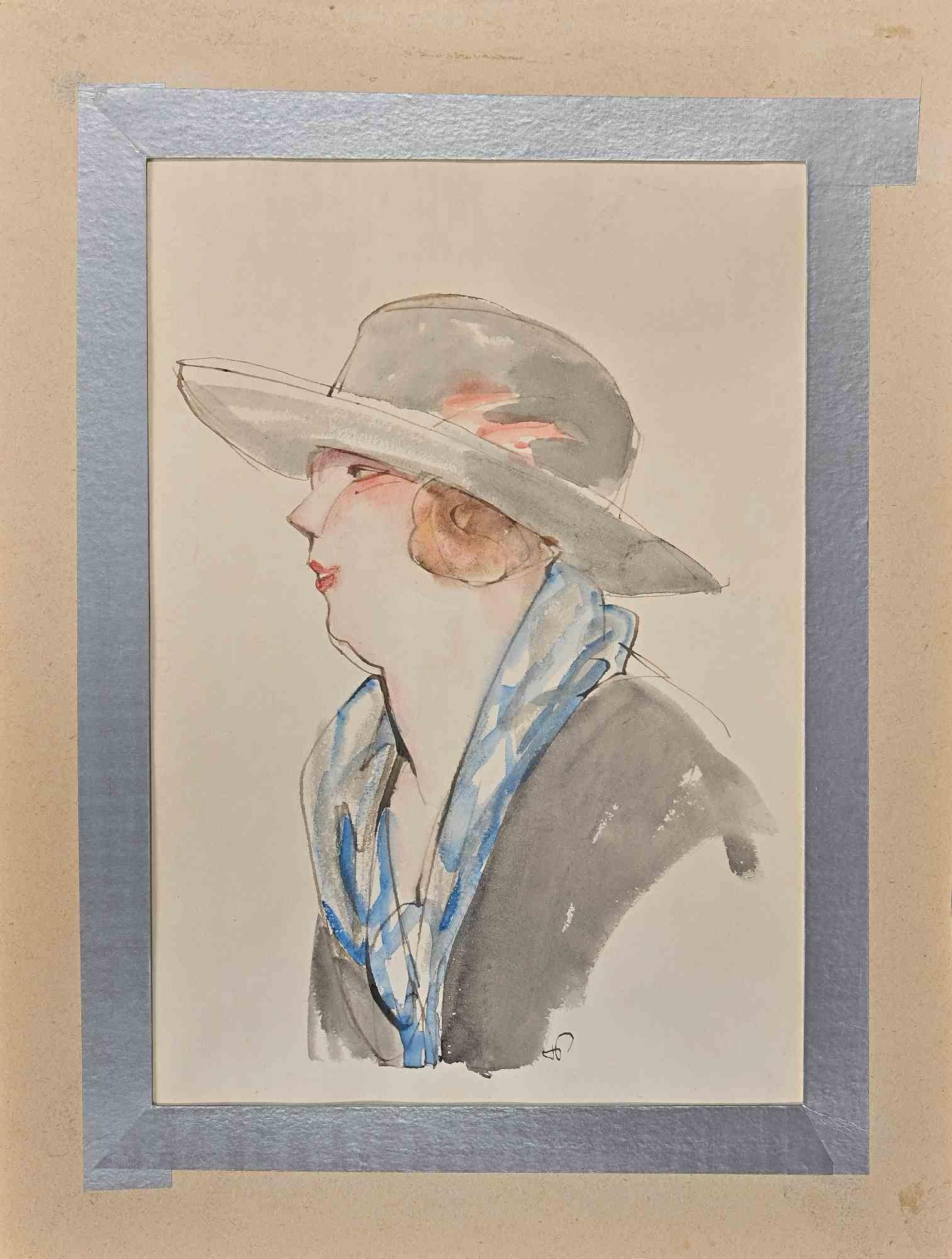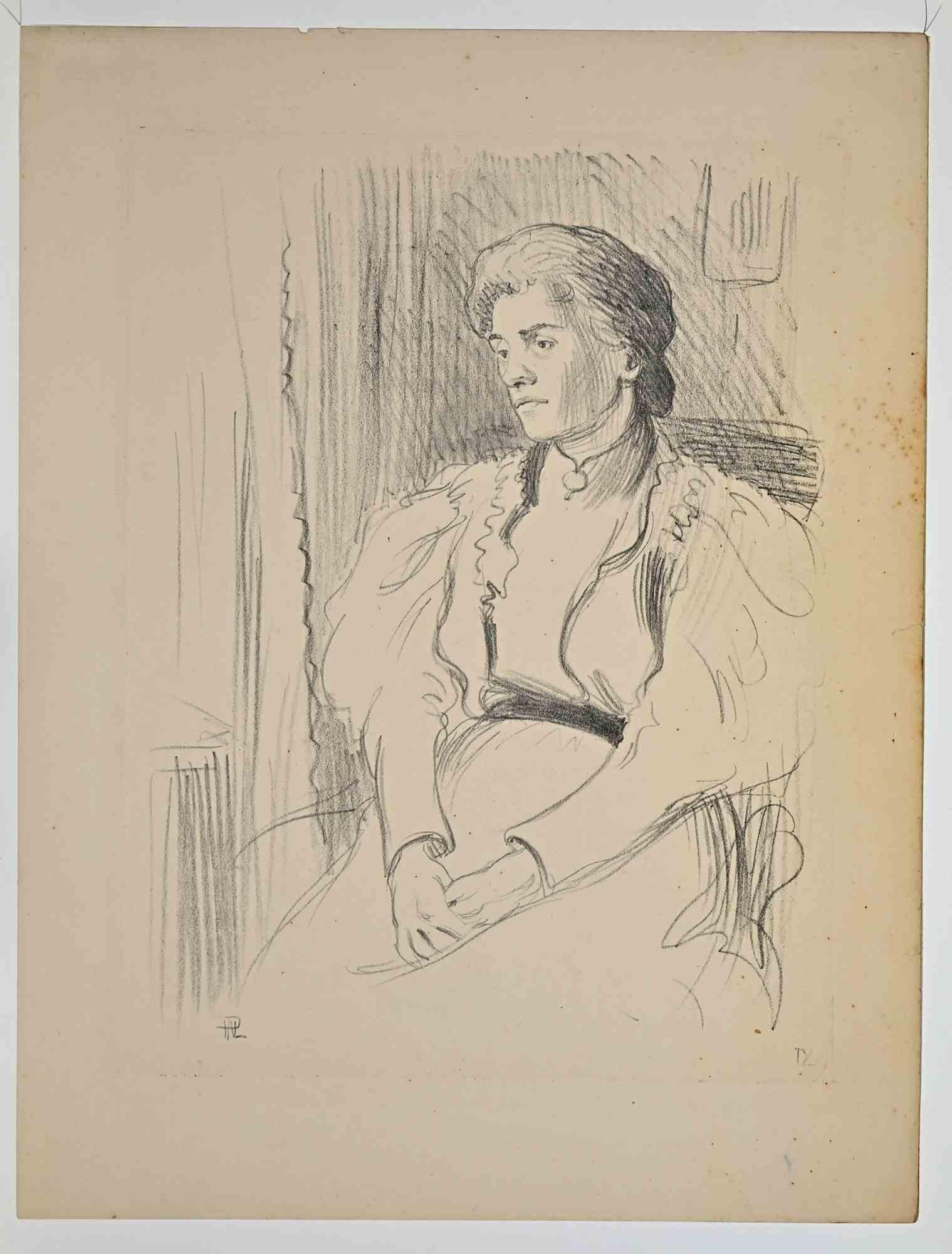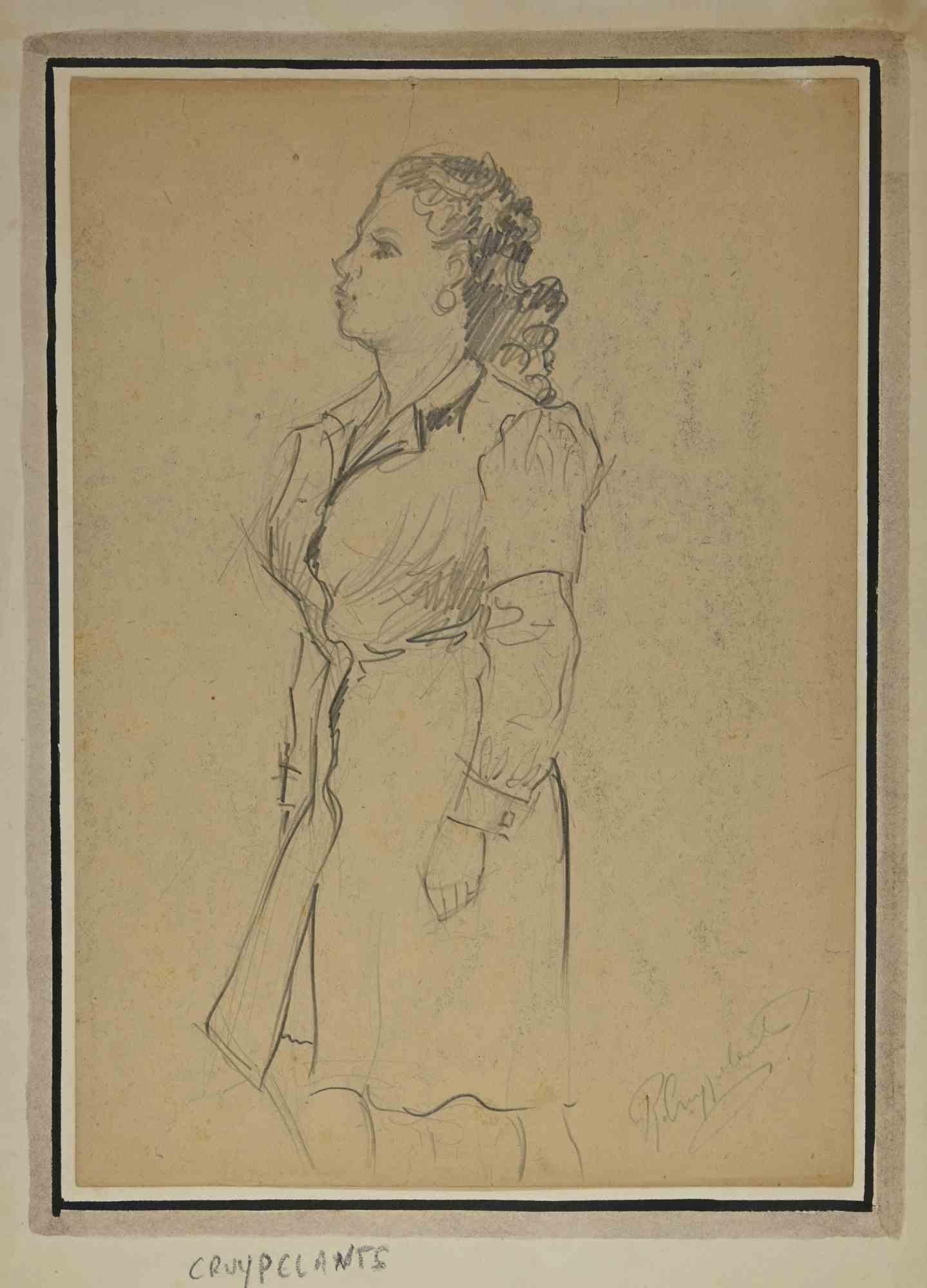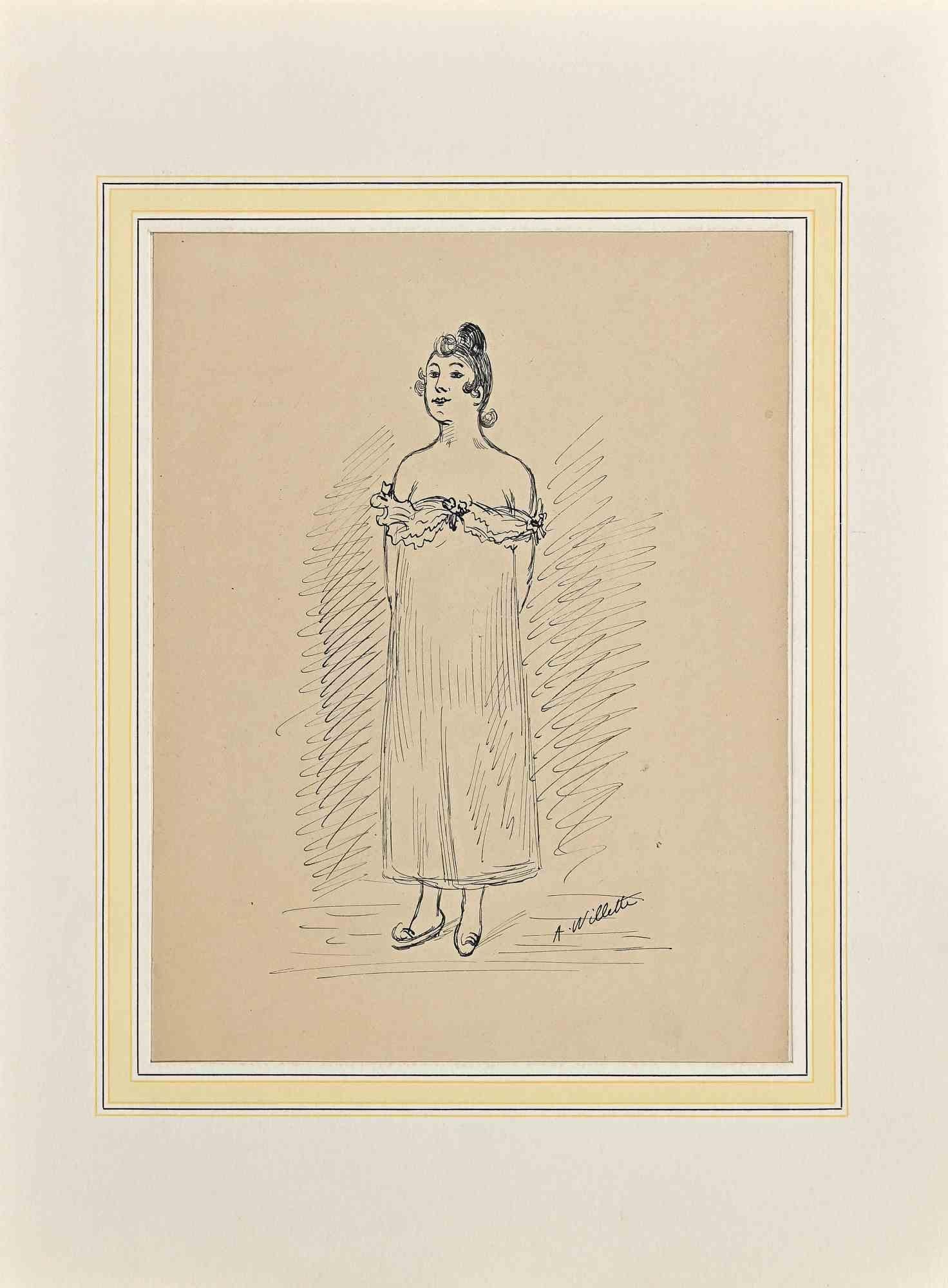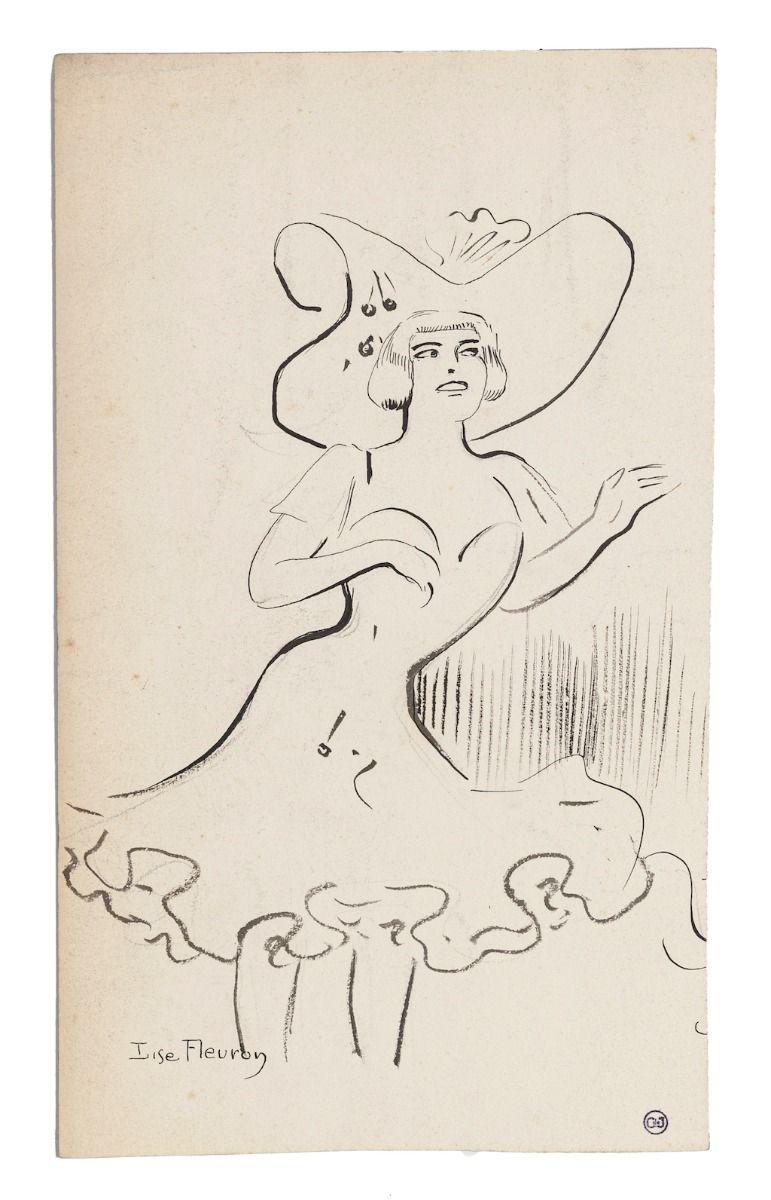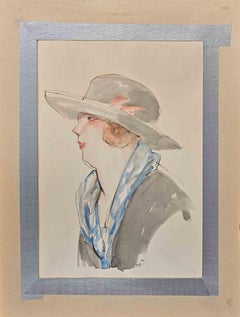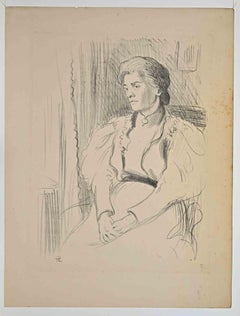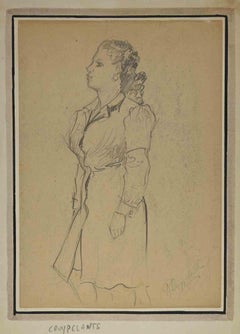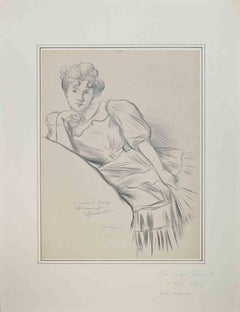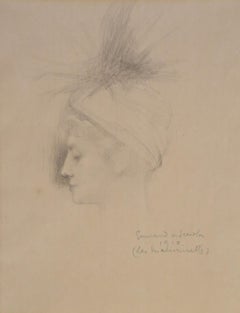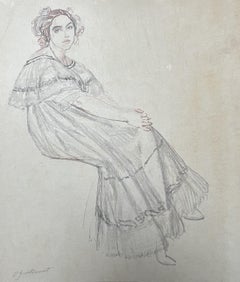Items Similar to Portrait de Mme De Mornand - Ink on Paper by Maurice Lourdey - 1910
Want more images or videos?
Request additional images or videos from the seller
1 of 3
Maurice LourdeyPortrait de Mme De Mornand - Ink on Paper by Maurice Lourdey - 19101910
1910
$417.17
£308.90
€350
CA$573.67
A$637.98
CHF 333.95
MX$7,782.60
NOK 4,196.26
SEK 3,947.12
DKK 2,664.77
About the Item
Portrait de Mme de Mornand is an original drawing in ink on paper realized by Maurice Lourdey (1860-1934)
Dated on the upper right 22.02.10
Stamp on the lower right ""CJ"
Good conditions, except for some folding and aged margins.
The drawing represents an interesting figure through rapid strokes in well-defined hatching.
- Creator:Maurice Lourdey (1860 - 1934)
- Creation Year:1910
- Dimensions:Height: 10.24 in (26 cm)Width: 5.52 in (14 cm)Depth: 0.04 in (1 mm)
- Medium:
- Movement & Style:
- Period:
- Framing:Framing Options Available
- Condition:Insurance may be requested by customers as additional service, contact us for more information.
- Gallery Location:Roma, IT
- Reference Number:Seller: M-1143531stDibs: LU65037509572
About the Seller
4.9
Platinum Seller
Premium sellers with a 4.7+ rating and 24-hour response times
1stDibs seller since 2017
7,680 sales on 1stDibs
Typical response time: 3 hours
- ShippingRetrieving quote...Shipping from: Grasse, France
- Return Policy
Authenticity Guarantee
In the unlikely event there’s an issue with an item’s authenticity, contact us within 1 year for a full refund. DetailsMoney-Back Guarantee
If your item is not as described, is damaged in transit, or does not arrive, contact us within 7 days for a full refund. Details24-Hour Cancellation
You have a 24-hour grace period in which to reconsider your purchase, with no questions asked.Vetted Professional Sellers
Our world-class sellers must adhere to strict standards for service and quality, maintaining the integrity of our listings.Price-Match Guarantee
If you find that a seller listed the same item for a lower price elsewhere, we’ll match it.Trusted Global Delivery
Our best-in-class carrier network provides specialized shipping options worldwide, including custom delivery.More From This Seller
View AllPortrait of a Lady - Drawing by Hermann Paul - Early 20th Century
Located in Roma, IT
Portrait of a Lady is a pencil, ink and watercolor drawing realized by Hermann Paul.
Hand signed on the lower right corner. Passpartout included cm 40.5x30.5
Good condition.
René ...
Category
Early 20th Century Modern Figurative Drawings and Watercolors
Materials
Paper, Ink, Watercolor, Pencil
Portrait of a Lady - Drawing by Hermann Paul -1890s
Located in Roma, IT
Portrait of a Lady is a Pencil Drawing realized by Hermann Paul.
Hand signed on the lower left corner. Passpartout included cm 51x35
Good condition.
René Georges Hermann-Paul (27...
Category
1890s Modern Figurative Drawings and Watercolors
Materials
Paper, Pencil
Portrait of a Woman - Drawing by Roland Cruypelants - 1920s
Located in Roma, IT
Portrait of a Woman is an Artwork realized by the Artist Roland Cruypelants (1882-1947).
Drawing pencil on paper, Hand-signed by the artist on the lower right corner.
The artwork...
Category
20th Century Modern Figurative Drawings and Watercolors
Materials
Pencil
Woman - Drawing by Pierre Georges Jeanniot - Early 20th Century
By Pierre Georges Jeanniot
Located in Roma, IT
Woman is a Pencil drawing realized by Pierre Georges Jeanniot in the Early 20th Century.
Good condition on a yellowed paper.
Hand-signed.
Pierre-Georges Jeanniot (1848–1934) wa...
Category
Early 20th Century Modern Figurative Drawings and Watercolors
Materials
Pencil
The Lady - Drawing by Adolphe Willette - Late-19th century
By Adolphe Willette
Located in Roma, IT
The Lady is a Drawing realized by the artist Willette (Adolphe Léon).
Good condition included a white cardboard passpartout 34.5x26 cm.
Signature on the lower right margin.
Adolphe Léon Willette (30 July 1857, Châlons-sur-Marne – 4 February 1926, Paris) was a French painter, illustrator, caricaturist, and lithographer, as well as an architect of the famous Moulin Rouge cabaret. Willette ran as an "anti...
Category
19th Century Art Nouveau Figurative Prints
Materials
Paper, Pencil
Model - Original Drawing in Pencil and Ink on Paper by Lise Fleuroy - 1900
By Lise Fleuroy
Located in Roma, IT
Model is an original drawing in pencil and ink on paper realized by Lise Fleuroy.
Hand-signed on the lower left
The state of preservation is very good.
The artwork represents a model woman happily stands with a big fashionable hat...
Category
20th Century Modern Figurative Drawings and Watercolors
Materials
Ink, Pencil
You May Also Like
Lucien Victor Guirand de Scevola (1871-1950), Les Marionnettes 1910, drawing
By Lucien-Victor Guirand de Scévola
Located in Paris, FR
Lucien Victor Guirand de Scevola (1871-1950)
Portrait of Marie-Thérèse Piérat in Les Marionnettes, 1910
Pencil on paper,
signed, dated and annotated lower ...
Category
1910s Art Nouveau Portrait Drawings and Watercolors
Materials
Carbon Pencil
Elegant Woman Seen in Cafe de la Paix (Paris) - Pencil drawing - circa 1914
By Georges Conrad
Located in Paris, IDF
Georges CONRAD (1874-1936)
Elegant Woman Seen in Cafe de la Paix (Paris)
Original pencil and color pencils drawing
Signed with the stamp of atelier
On paper 26.5 x 20 cm (c. 10,4 x ...
Category
1910s Academic Figurative Drawings and Watercolors
Materials
Carbon Pencil, Color Pencil
Octave Denis Victor Guillonnet (1872 - 1967) A woman seated, drawing signed
By Octave Guillonnet
Located in Paris, FR
Octave Denis Victor Guillonnet (1872 - 1967)
A young woman seated
signed lower leftt
Charcoal, red and white chalks on thin paper transfered on cardboard
49 x 39 cm
Framed : 55.5 x ...
Category
1930s Art Deco Portrait Drawings and Watercolors
Materials
Chalk, Charcoal
French Woman with Japanese Inspired Gown - Pencil drawing - circa 1916
By Georges Conrad
Located in Paris, IDF
Georges CONRAD (1874-1936)
French woman with Japanese inspired gown
Original pencil drawing
Signed by stamp of atelier
On paper 26.5 x 20 cm (c. 10,4 x 7.8 in)
Good condition, pap...
Category
1910s Academic Figurative Drawings and Watercolors
Materials
Pencil
Well Dressed Woman
By Charles Dana Gibson
Located in Fort Washington, PA
Mark at the bottom of the image is a pen line trial stroke
Category
20th Century Portrait Drawings and Watercolors
Materials
Paper, Ink
Parisienne /// Art Nouveau French Lithograph Impressionist Figurative Lady Woman
By Maurice Eliot
Located in Saint Augustine, FL
Artist: Maurice Eliot (French, 1862-1945)
Title: "Parisienne"
Portfolio: Revue de l'Art Ancien & Moderne
*Issued unsigned, though signed by Eliot in the plate (printed signature) low...
Category
Early 1900s Impressionist Figurative Prints
Materials
Lithograph
More Ways To Browse
Antique Animal Art
Colorful Acrylic Painting
Modern Mexican Art
Nature Impressionist Paintings
Contemporary Artists Plates
Original Art For Sale
Oil Paintings Architectural
California Painter
Woodcut Art
Painting Of Fabric
Large Paintings With Texture
Father Son
Vintage 10X10 Frame
Japanese Art Framed
American Midcentury Painting
Contemporary Impressionist Artists
Grey Painting
Still Life Paintings Flowers
